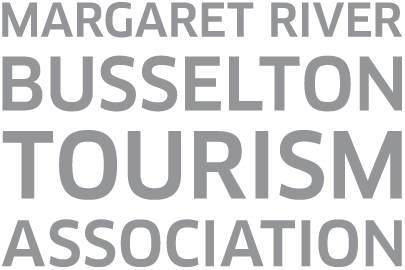For more than 60,000 years, the Leeuwin Ridge which runs from Cape Naturaliste to Cape Leeuwin has lain at the heart of a sense of the spirit of Wadandi Boodja.
In the mid-1950s, broad remnant bushland associated with the Leeuwin-Naturaliste ridge was gazetted as an A-Class reserve and became known as the Leeuwin-Naturaliste National Park. The Park runs the length of the Ridge, between Capes Naturaliste and Leeuwin. The Park represents an amalgamation of various parcels of remnant bushland which have an area of approximately 22,000 ha.
Precious and Rare
Life in the Leeuwin-Naturaliste National Park is precious and rare – it includes the Boranup Karri Forest, important damplands and a nationally-significant karst system with hundreds of caves and speleological features. The National Park’s coastline is fringed with pristine beaches and bays, and features fascinating limestone and granite outcrops, such as Sugarloaf Rock and Canal Rocks.
The geology of the park is unique in the fact that there is an extensive area of limestone associated with granite. The Leeuwin Ridge, which the park is synonymous with, is formed with Pleistocene and Holocene dune systems which have calcified over. The park is crossed by several creeks and rivers, including the Margaret River.
The 123-kilometre Cape to Cape track traverses the Ridge and beaches of the National Park, following the coast from Cape Naturaliste in the north to Cape Leeuwin in the south.
The Park is a place with strong cultural heritage values, with Devil’s Lair containing the earliest archeological evidence of human habitation in Southwest Australia.
The National Park forms part of one of the world’s 35 biodiversity hotspots – a status attributed to places with exceptional diversity, high endemism and where environmental values are under threat.
Threatened Values
Over the decades, the Leeuwin-Naturaliste National Park has been under increasing pressure from the weight of intense and growing public use. Today, the Leeuwin-Naturaliste National Park is the most visited in Western Australia, with visitation increasing from 350,000 visitors per year in the mid-1990s to 4.2million visitors per year in 2021.
The National Park’s linear, fragmented and irregular shape has led to the creation of multiple entry and exit points, which, coupled with the extensive visitation rate, makes the park very difficult to manage. Within the Boranup Forest, a lack of designated pathways and an absence of interpretive information to orient and educate visitors has led to destructive and sometimes dangerous behaviour, which is having a deleterious impact on the area’s biodiversity.
The meagre public resources that have been applied to the protection and conservation of the National Park have been insufficient for the task. The Park is hamstrung by its inability to charge entry fees, which has compounded the issues that it currently faces.
The Calgardup Fire of December 2021, which burned over 8,000 ha of the Boranup Forest and the associated coastal heath, was devastating. The fire caused the dispersal of protected fauna and bird species from the forest, and had a significant impact across the landscape. In its wake, there has been a proliferation of colonising weed species, and exacerbated coastal erosion.
Custodianship of the National Park
As we are all modern custodians of country, it is right and appropriate that we show profound respect and care for this place.
In response to the Calgardup Fire, in December 2021 key community organisations of the Margaret River Region including MRBTA, Shire of Augusta-Margaret River, Undalup Association, Nature Conservation Margaret River Region, Margaret River Wine Industry Association, Margaret River Chamber of Commerce and Industry, Transition Margaret River and the South West Catchments Council joined to propose a course of action to Government that will underpin the Leeuwin-Naturaliste National Park’s unique but fragile conservation values.
The resulting proposal, The 6 Point Recovery Plan for Boranup Forest & the Leeuwin-Naturaliste National Park, features recommendations around the management of the National Park, including resourcing, visitor facilities and the rehabilitation and inclusion of the Nindup Plain – one of the most ecologically-significant areas on the Leeuwin Ridge.
Conserving the Capes
In 2022, points from the National Park Recovery Plan were adopted into the Conserving the Capes business case, which is currently under consideration by the State Government. The aims of the initiative are to future-proof the National Park and in doing so, allow it to accept the ever-increasing visitation rate in a sustainable way. The Conserving the Capes initiative incorporates three main sub-projects:
- The Capes Improvement Project: to develop facilities and infrastructure supporting highly-visited but overcrowded coastal recreation sites within the Leeuwin-Naturaliste National Park.
- Unbeaten Tracks: A long-term initiative to upgrade and interconnect the region’s walk and cycle trail network, including the much-loved Cape to Cape Track and Wadandi Track.
- Yandi Mia: A project to protect and enhance the conservation values of the Boranup Forest by managing visitation in a highly informed and curated way. The project will protect the area’s environmental values into perpetuity. It will showcase the Park via a world-class elevated forest walkway and a modern interface, and in doing so will provide ongoing employment opportunities for traditional Wadandi custodians.
MRBTA, along with its partners, continues to promote these critical projects and remains hopeful of a Government commitment.
Destination Marketing and Visitor Servicing
Alongside its advocacy work, MRBTA’s marketing and visitor servicing strategy focusses on improving visitor understanding and appreciation of the Leeuwin-Naturaliste National Park, and aims to inspire visitors to participate in quality, authentic tourism experiences which respect the Park’s environmental, cultural and heritage values.
MRBTA brings together a team of professional writers and photographers to elucidate the values of the Park through editorial published via the destination website at margaretriver.com and in its nationally-recognised biannual magazine, Tales & Trails.
Editorial examples

